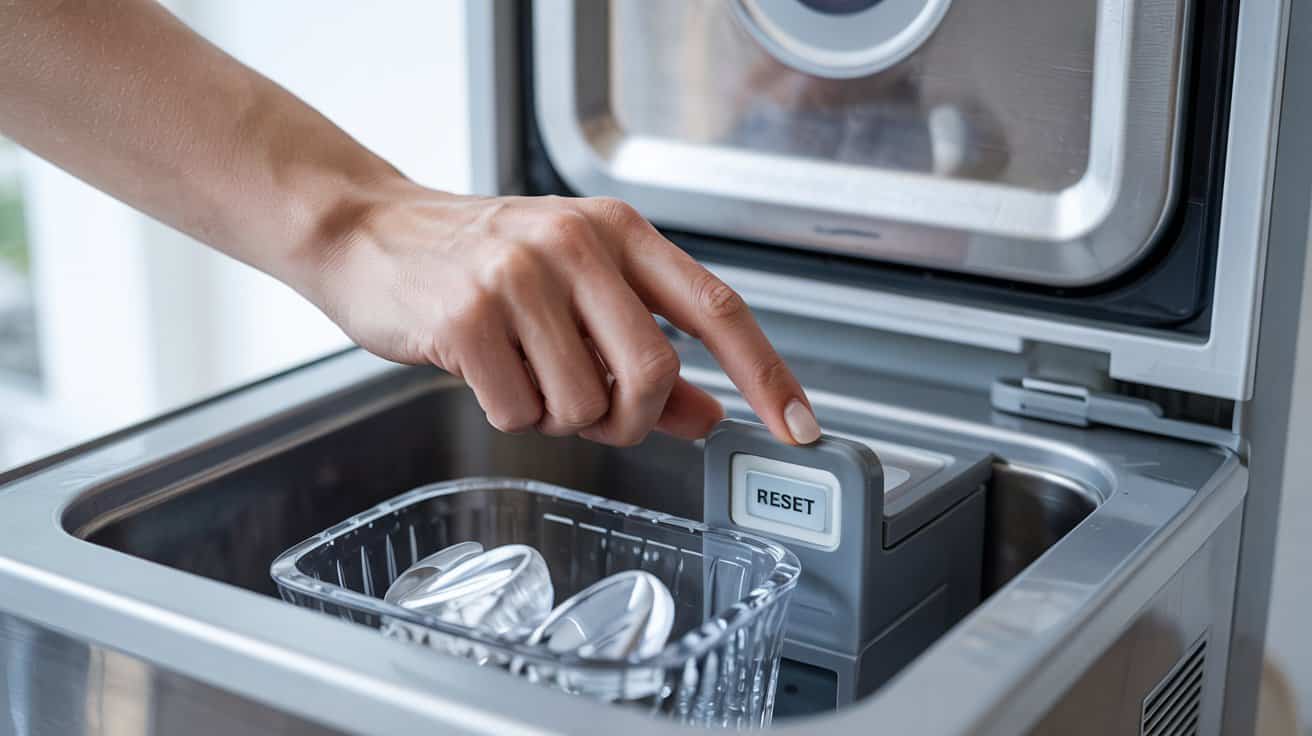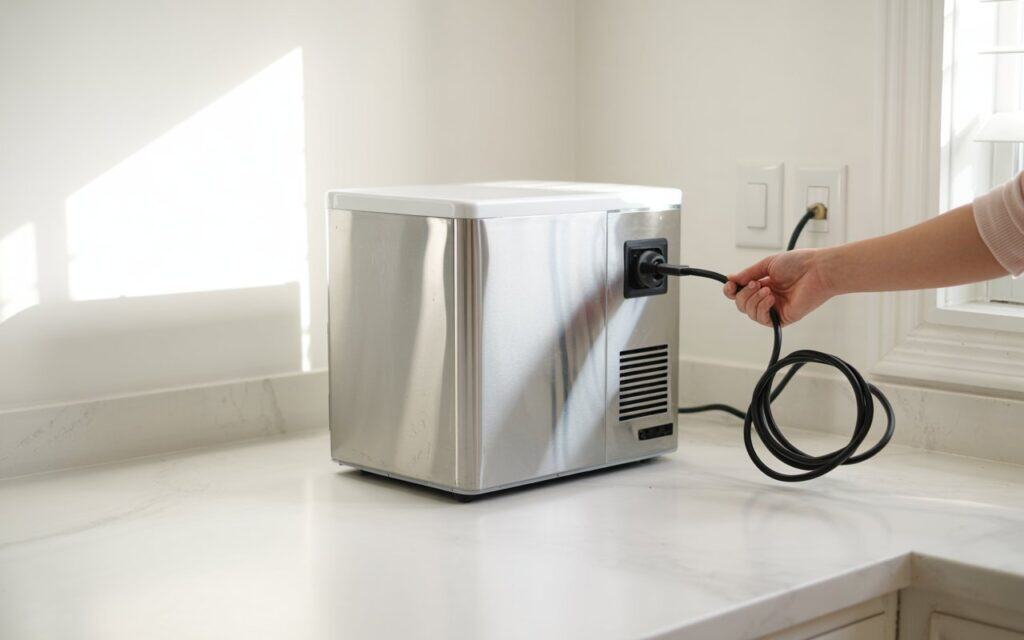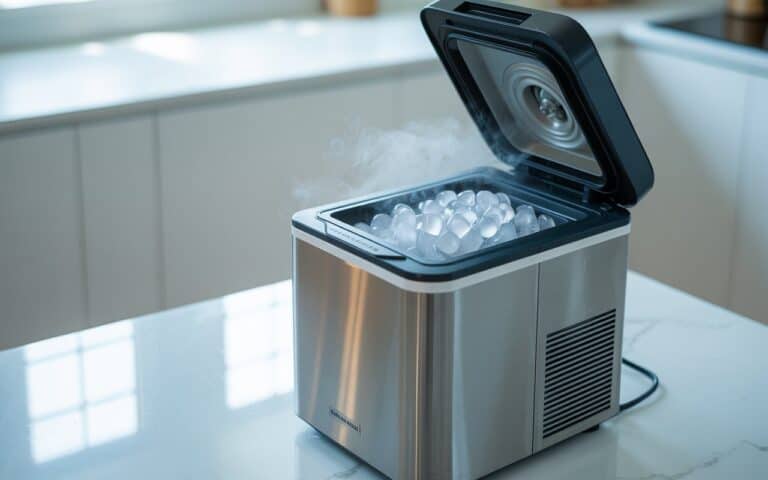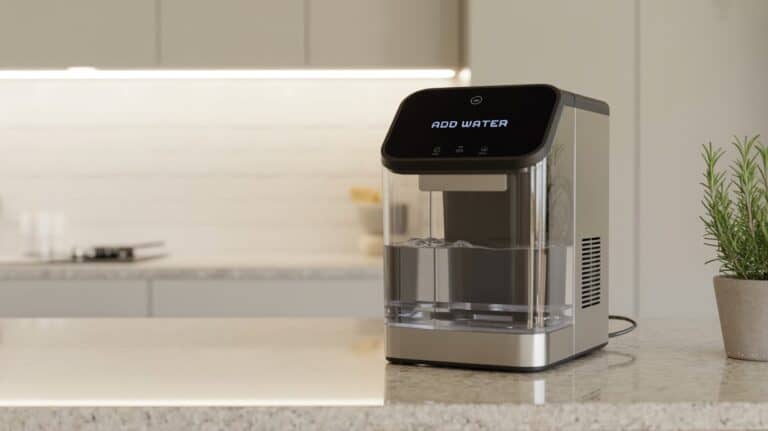How to Reset an Ice Maker (Quick and Simple Guide)

If your ice maker has suddenly stopped working, you’re probably wondering whether it needs a reset — and how to actually do that.
Maybe it’s no longer making ice, the indicator light is blinking, or it’s just sitting there doing nothing. These small machines are handy, but when they act up, it can be frustrating.
The good news?
Most ice makers can be reset in just a few easy steps — no tools, no tech skills, and no need to call a repair service.
In this guide, I’ll walk you through the exact process to reset your ice maker properly. Whether you have a countertop model, a built-in unit, or one inside your refrigerator, you’ll find the steps you need right here.
And if resetting doesn’t fix the problem, I’ll also point you to some of the most common issues ice makers run into — and what you can do next.
Let’s get your machine back up and running. ❄️
General Steps to Reset Any Ice Maker
Before jumping into brand-specific instructions, it’s helpful to start with a few general steps.
Most ice makers — whether they’re countertop models, fridge units, or built-ins — follow a similar reset process.
If your ice maker is not working, stuck, or simply needs restarting, this quick fix might be all it takes to get it running again.
Let’s go through the basic reset steps that work for most machines.
Step 1 – Unplug the Ice Maker

The first thing you should do before attempting to reset your ice maker is to unplug it from the power source.
This isn’t just a precaution — many ice makers need to be fully powered off to allow a proper reset. Unplugging the unit helps clear any electrical signals or glitches that may be preventing it from functioning normally.
If your ice maker is built into a refrigerator, use the control panel to power it off, or unplug the entire appliance if needed. For portable countertop models, simply disconnect the power cord from the wall outlet.
🔌 Important:
Always make sure your hands are dry before unplugging the machine to avoid any electrical hazards.
Step 2 – Locate the Reset Button (If Available)
Once the machine is safely unplugged, the next step is to locate the reset button — if your model has one.
Most modern ice makers, especially those found in refrigerators or built-in units, include a small reset button. It’s often located near the control panel, behind the ice tray, or inside the unit near the motor housing.
Check your user manual or look for a labeled button marked “Reset”, “Test”, or something similar. If you can’t find it, don’t worry — not all ice makers come with one, and we’ll explain what to do in that case later in this guide.
Step 3 – Plug In the Ice Maker and Press the Reset Button
With the machine plugged back in, it’s time to press and hold the reset button.
Most ice makers require you to hold the button for about 5 to 10 seconds. In many models, you’ll hear a beep, a click, or see the indicator lights flash — these are signs that the reset process has started.
Some units may automatically begin a short cycle to clear old ice or recalibrate internal parts. If your machine has a digital display, it might show a reset message or blink briefly.
Try to press the button just once, firmly and patiently. Avoid tapping or repeating the action unless the manual tells you otherwise.
If your ice maker doesn’t provide clear feedback, give it a few minutes to reset internally. Then check if it starts working normally.
Step 4 – Reconnect the Power and Test

After completing the reset, it’s time to restore power and see if your ice maker is back in action.
Plug the machine back into the outlet, or turn it on from the control panel if it’s part of a refrigerator. Give it a minute or two to initialize — some units take a bit of time to restart internal components and begin a new ice-making cycle.
Watch for any blinking lights, sounds, or status indicators that show the unit is working. In some models, you’ll hear water filling the reservoir or the fan kicking in. These are good signs that your reset worked.
If nothing happens after a few minutes, don’t panic. Some ice makers have a slight delay before kicking in. However, if there’s still no response after 10–15 minutes, it could point to a deeper issue — which we’ll cover later in this guide.
Resetting Different Types of Ice Makers
While most ice makers follow a similar reset process, there are slight differences depending on the type of machine.
Here’s a simplified breakdown based on whether you’re using a countertop, refrigerator, or built-in model.
Countertop Ice Makers (Frigidaire, Igloo, and others):

Countertop models are generally easy to reset and often don’t include a dedicated reset button.
Here’s what works for most units:
- Turn off and unplug the machine. Wait 3–5 minutes to allow it to fully power down.
- Check the water reservoir and empty the ice basket. Some models won’t restart if water is low or ice is blocking the system.
- Plug the machine back in and turn it on. This alone often triggers a soft reset.
- If your model has a “Reset,” “Select,” or “Clean” button, hold it for 5–10 seconds to start a reset or cleaning cycle.
- Wait and observe. If you hear the fan or see water filling, your reset likely worked. If not, we’ll cover troubleshooting later.
This process applies to many popular brands like Frigidaire, Igloo, and similar compact models.
Resetting Refrigerator & Built-In Ice Makers (Samsung, LG, GE):
These models often have more integrated systems — and that means a few differences:
- You may need to reset through a control panel instead of a physical button.
- The reset button (if available) is often hidden behind the ice bucket or near the water line.
- Some units require removing the ice tray or holding the “Test” button with a pin or paperclip.
- A reset might trigger a short cycle — just listen for clicks or motor sounds after pressing the button.
If you’re unsure, always check your refrigerator manual — some brands like Samsung, LG, or GE have unique reset methods.
What If Your Ice Maker Doesn’t Have a Reset Button?

Some ice makers — especially older models or basic countertop units — don’t include a dedicated reset button.
If that’s the case, don’t worry. You can still perform a “soft reset” by turning the machine off, unplugging it for a few minutes, and then plugging it back in. This simple power cycle often clears minor glitches and restarts the machine’s internal system.
While doing this, it’s also a good idea to check the water reservoir, clean out any stuck ice, and make sure the sensors aren’t blocked.
👉 If your machine still doesn’t respond, cleaning it might help more than resetting.
You can follow our full guide on how to clean your ice maker the right way — without damaging any internal parts.
Conclusion: Bring Your Ice Maker Back to Life
Resetting your ice maker doesn’t have to be complicated.
In most cases, a simple power cycle or holding the reset button is all it takes to get things working again.
Give it a try — and don’t stress if it takes a couple of minutes to respond.
Have you tried resetting your ice maker before?
Let us know how it went, or feel free to ask if something’s still not working. We’re here to help.
FAQs About Resetting Ice Makers
How do I know if my ice maker needs to be reset?
If your machine suddenly stops making ice, starts flashing lights, or becomes unresponsive, a reset is usually the first thing to try.
Can resetting fix ice not being made?
In many cases, yes. A reset clears small errors or stuck sensors that may be stopping the ice cycle.
Is it safe to reset my ice maker multiple times?
Yes — but don’t overdo it. If a reset doesn’t solve the problem after one or two tries, it’s best to troubleshoot or check your manual.






